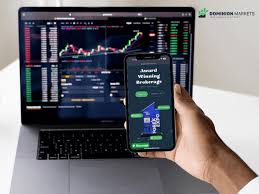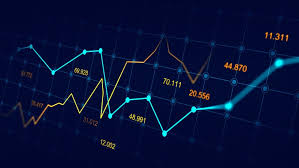
In the ever-evolving world of Forex trading, demo trading forex Trading Broker KW serves as an essential resource for many aspiring traders. Engaging in demo trading provides a crucial step to success, helping traders to practice and refine their skills in a risk-free environment.
What is Demo Trading in Forex?
Demo trading refers to the practice of trading in a simulated environment, utilizing virtual money rather than real currency. This allows traders to get a feel for the Forex market, experiment with trading strategies, and understand how different factors affect currency values without the fear of losing real money. Demo accounts are offered by most Forex brokers, allowing traders to practice with the same tools and platforms they would use in live trading.
Why Use a Demo Trading Account?
Demo trading accounts provide numerous advantages, especially for beginners. Here are some key benefits:
- Risk-Free Environment: Trading with virtual money eliminates the psychological pressures associated with real money trading, allowing traders to experiment freely.
- Learn Trading Strategies: Traders can develop and test their own trading strategies without the risk of financial loss, helping them to understand what works in practice.
- Understanding Market Mechanics: Demo accounts allow traders to familiarize themselves with the market’s mechanics, including how to place trades, set stop-loss orders, and utilize leverage.
- Platform Familiarization: New traders can learn how to use the software and tools provided by their trading platform, making it easier to transition to live trading.
How to Get Started with Demo Trading
Starting with demo trading is typically quite simple. Follow these steps to begin:
- Choose a Forex Broker: Look for a reputable broker that offers a demo account option. Ensure they provide a user-friendly platform and good customer support.
- Sign Up for a Demo Account: Create an account by filling in the necessary details. Most brokers require basic personal information and an email address.
- Download the Trading Platform: After registration, download the trading software offered by the broker or access the trading platform through your web browser.
- Start Trading: Use the demo funds provided by the broker to start trading. Familiarize yourself with the tools, charts, and indicators available on the platform.
Key Features of Demo Trading Accounts
While each broker may have different features, most demo trading accounts include:
- Virtual Balance: Demo accounts come with a set amount of virtual money, allowing traders to practice as if they have real funds.
- Access to Live Market Conditions: Traders can practice in real-time market conditions, giving them an accurate view of how their strategies would perform.
- Charting Tools and Indicators: Most demo accounts provide the same analytical tools available to real accounts, such as various technical indicators and chart types.
- Educational Resources: Many brokers offer educational materials, webinars, and tutorials to help traders learn more during their demo trading journey.
Improving Your Trading Skills with Demo Accounts
Once you have an understanding of how demo trading works, the next step is to refine your trading skills. Here are some strategies that may help:

1. Set Realistic Goals
Establish achievable goals for your demo trading. This might include focusing on a specific trading strategy, learning to use technical analysis, or improving on your previous trades.
2. Keep a Trading Journal
Documenting your trades, strategies, and outcomes can provide valuable insights into your trading performance. This allows you to identify patterns in your results, aiding in the development of your skills.
3. Focus on Risk Management
Understanding risk management is crucial for successful trading. Use your demo account to practice setting stop-loss orders, calculating risk-to-reward ratios, and managing your overall exposure.
4. Test Different Strategies
Utilize the demo account to test various trading strategies. Try different approaches, such as scalping, day trading, or swing trading, to see which suits your personality and trading style best.
Transitioning from Demo to Live Trading
Transitioning from a demo account to live trading can be daunting. Here are some tips to ensure a smoother transition:
- Start Small: When moving to a live account, consider starting with a small amount of capital until you gain more confidence.
- Maintain Discipline: Stick to your trading plan and strategies that you practiced during the demo phase, keeping emotions in check.
- Continue Learning: The learning process never stops. Stay informed about market news, continue to learn new strategies, and adapt to changing market conditions.
Conclusion
Demo trading in Forex is an invaluable tool for both novice and experienced traders. It enables you to build confidence, refine strategies, and familiarize yourself with the trading platform without any risk. As the Forex market continues to grow and change, mastering the art of trading through consistent practice is essential for long-term success. Take advantage of the opportunity that demo trading offers, and you may find yourself well-prepared to take on the challenges of live trading.
